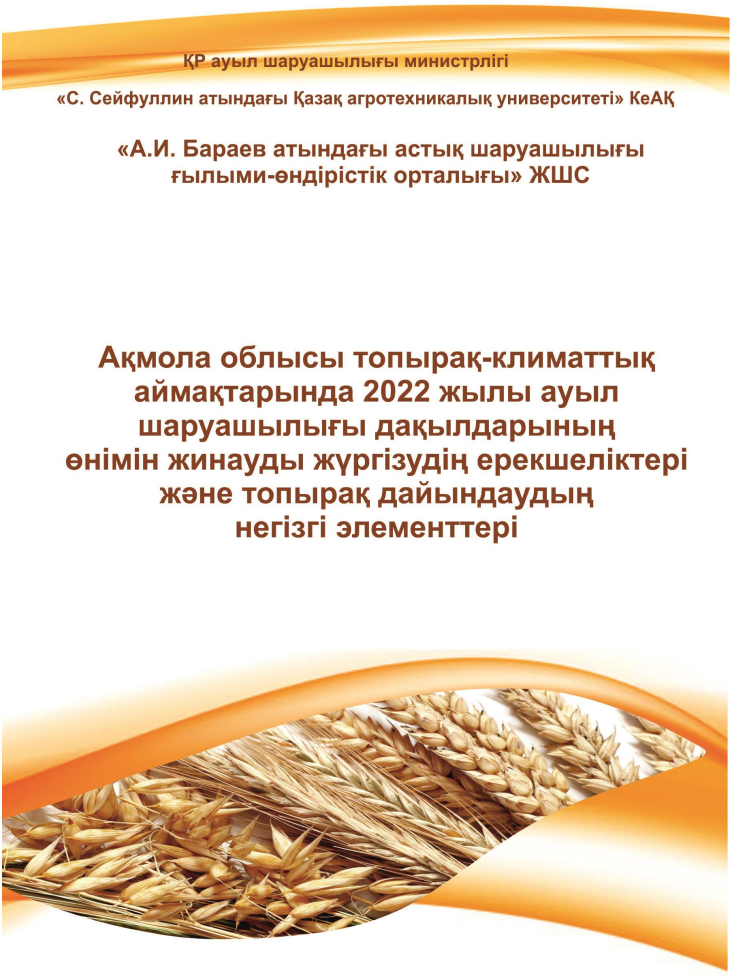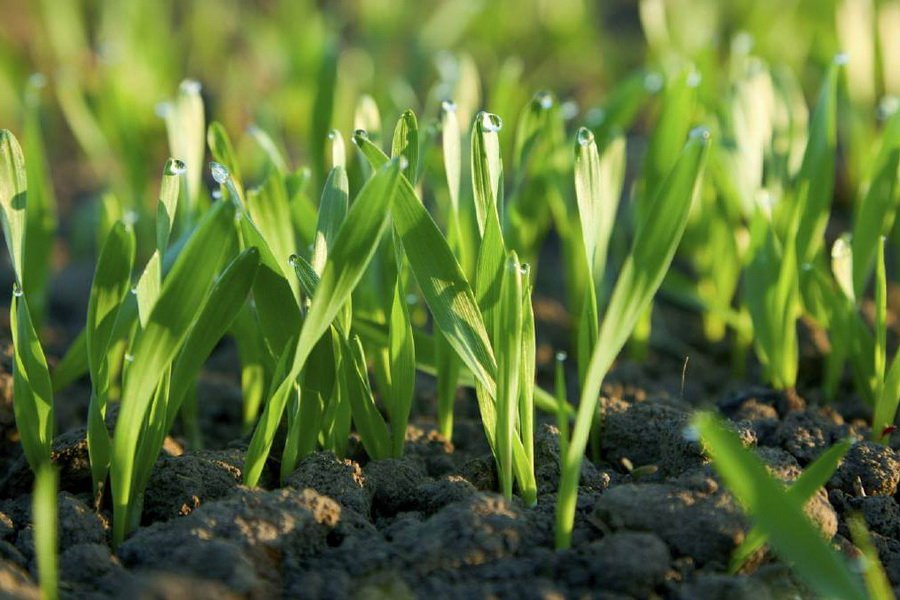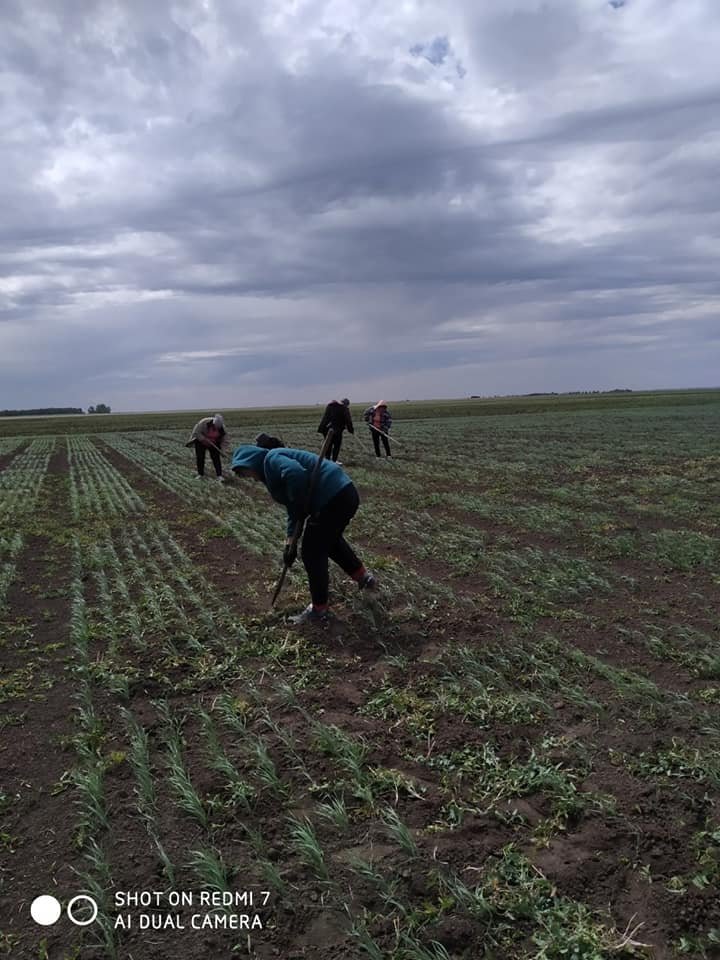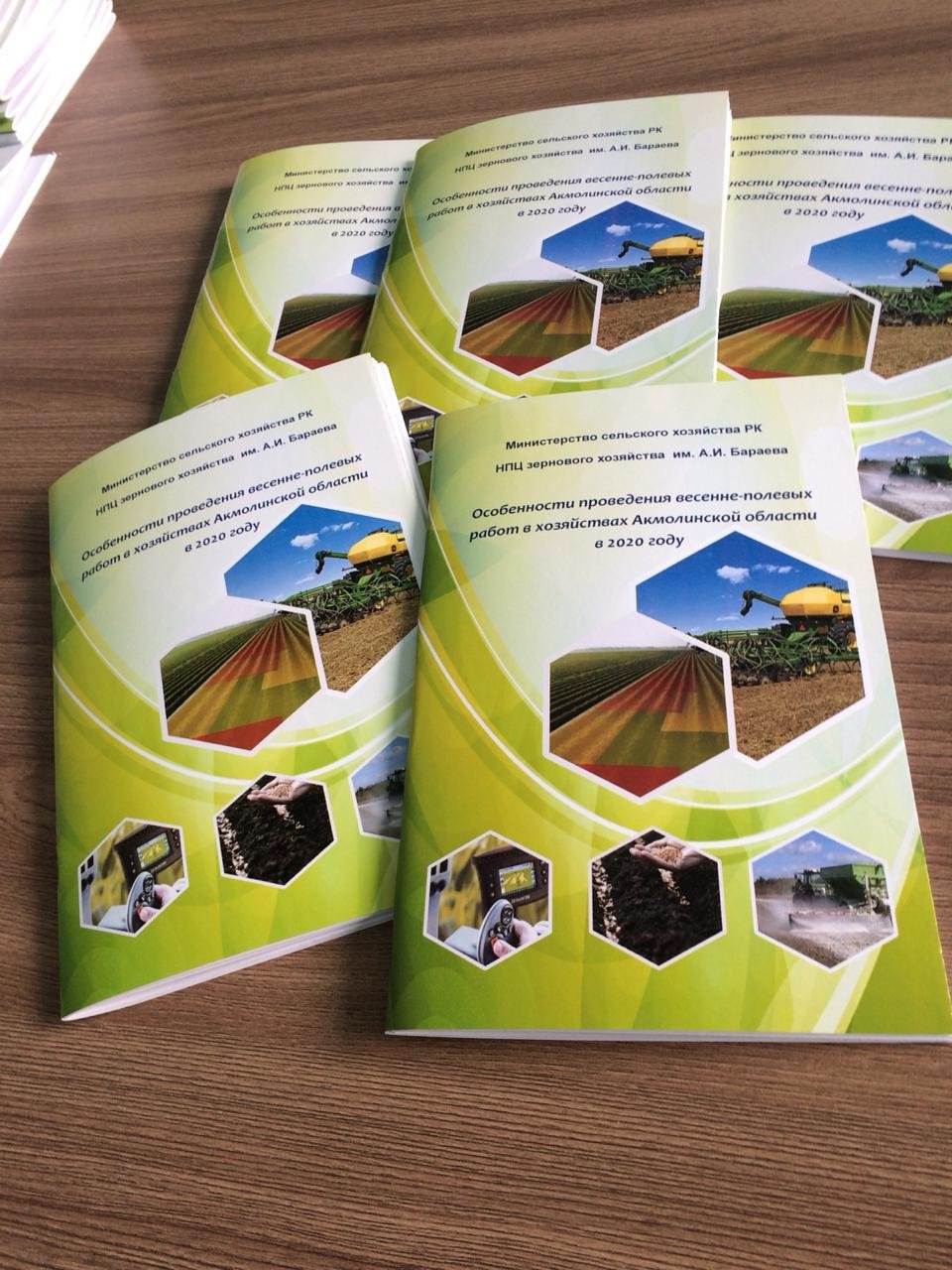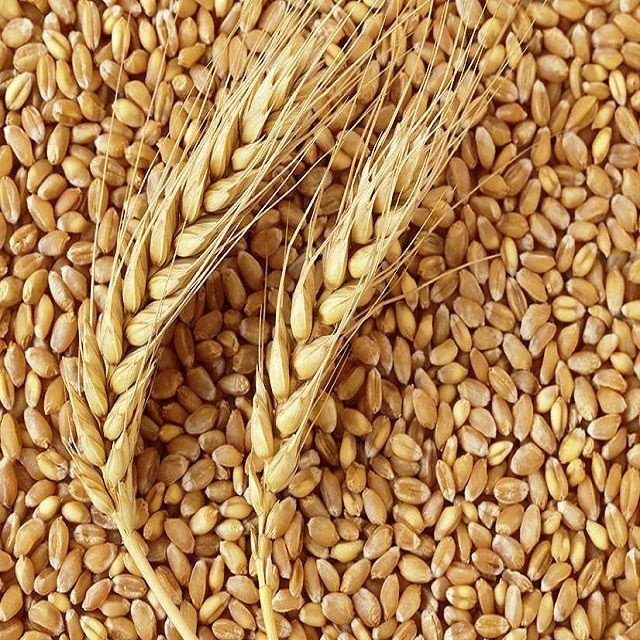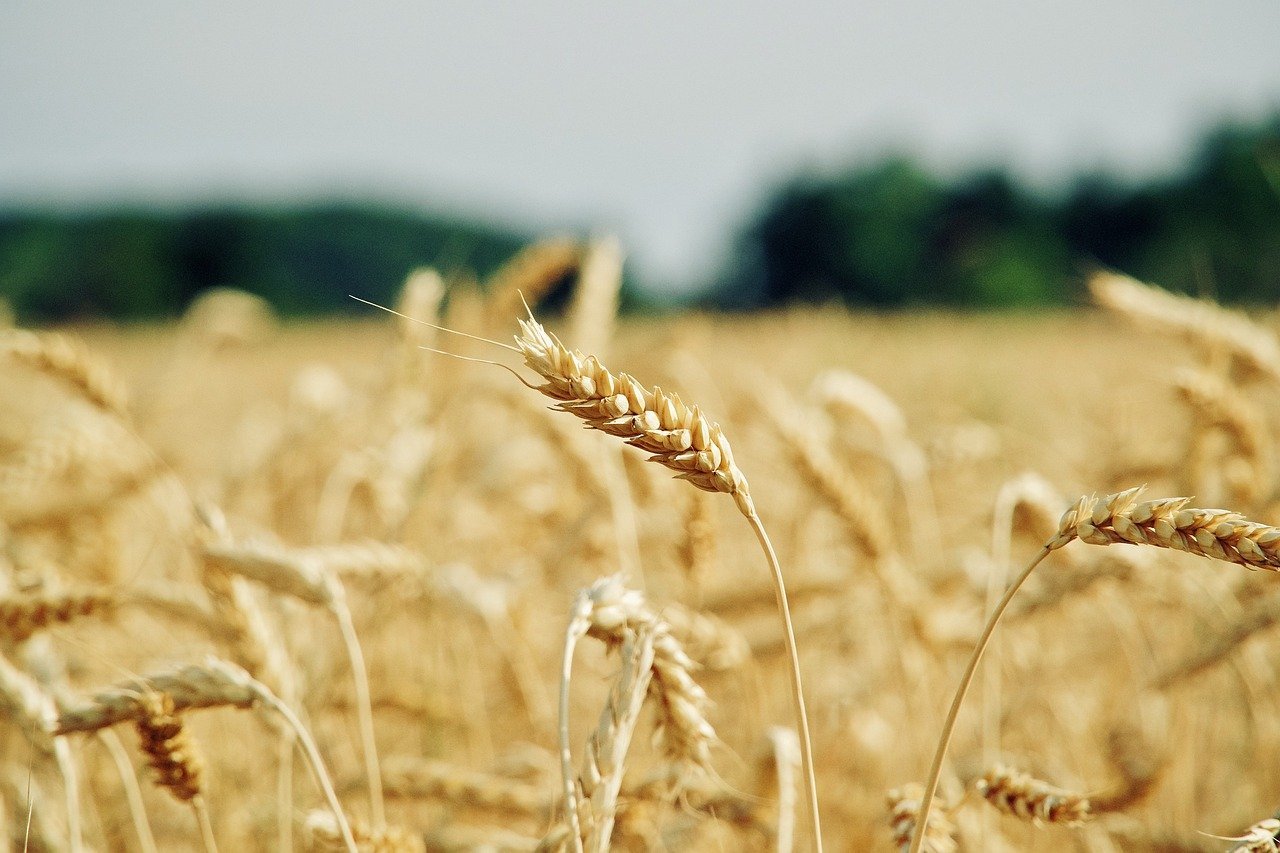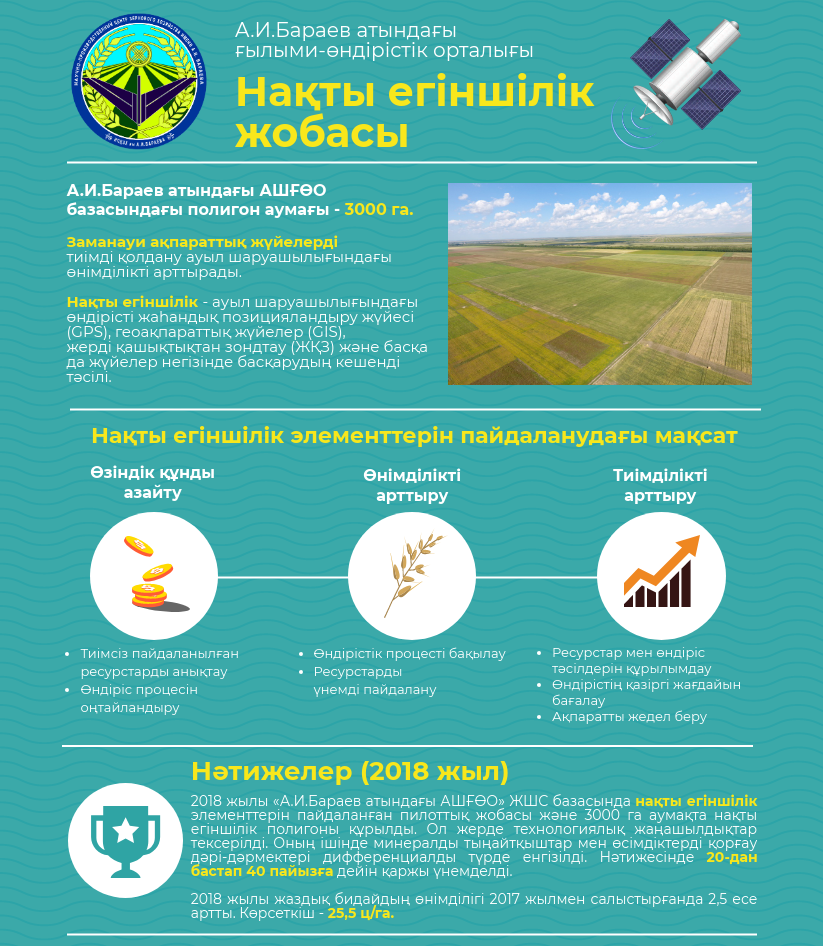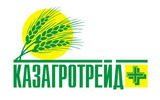When laid the productivity of land
Главная / News / Main news
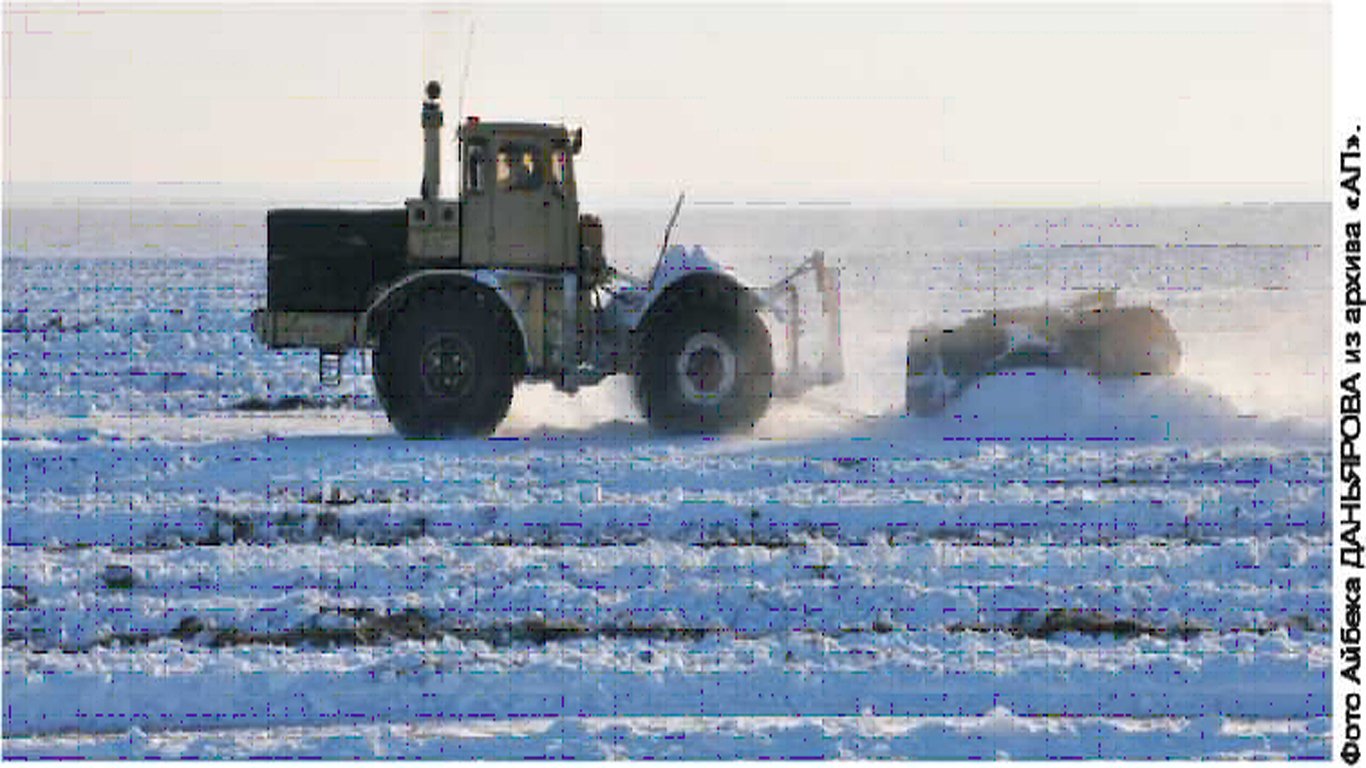
Despite the meteorological and agricultural drought, farmers have grown a yield of good crops in 2022. But the level of crop yields was uneven and varied even within the same landscape of land use. The lessons of 2022 showed that in conditions of drought in the fields, with good soil soaking, plants managed to withstand the June and July drought.
Summer precipitation fell unevenly. The sum of effective air temperatures by the end of the growing season exceeded the annual average by 16.6%. A similar situation was observed in 2020 and 2021. A significant characteristic feature: the last decade of summer is characterized by unstable weather both during the winter and summer periods, uneven precipitation. Characteristic signs of changes in weather conditions are the manifestation of heat and drought in the early spring period, dry winds and hot days (air temperature over 35 degrees) during the growing season of crops. The wind regime has become more active, which has a significant impact on the evaporation of soil moisture and, ultimately, on the drying of the upper soil layer during spring field work, on the development of wind erosion of soils. Every farmer knows about the importance of moisture in arid conditions. I would like to turn once again to the peculiarities of the current situation in terms of the initial content of soil moisture, the nature of snow removal, soil freezing, on which the effectiveness of the use of winter precipitation depends.
It is necessary to know that a lot of soil moisture evaporates in the pre-sowing period: examples of 2020, 2021 and 2022, when the air temperature in April and May exceeded the annual average by 2.0-2.4 times. For farmers of Kazakhstan, soil moisture is the basis for mitigating the negative effects of drought and heat. Autumn precipitation in 2022 after the end of the growing season of crops significantly replenished the reserves of productive moisture in the soil compared to 2020-2021.
In the zone of chernozem soils of the Akmola region, the amount of liquid precipitation for the months of September-October amounted to 22.9 mm with an average long-term indicators of 53.7 mm. In November, the amount of precipitation was 20.2 mm both in liquid form and in the form of solid precipitation. December 2022 was characterized by insignificant precipitation, but low air temperatures, which led to freezing of the upper soil layer. In fields where the height of the snow cover did not exceed 7-10 cm, the soil temperature was minus 10-13 degrees on the surface.
The reserves of productive moisture for stubble precursors in the meter-long soil layer are about 40-50 mm, of which 47-40% are concentrated in the 0-30 cm soil layer. The reserves of soil moisture in the meter layer of soil in the fallow fields (well prepared) are 115-122 mm. In fallow fields where soil preparation was not carried out in a timely manner (only 2-3 tillage during the summer period), soil moisture reserves are only 69-65 mm. In the fields where a stubble background with a height of 30-40 cm was formed by a combing header, the height of the snow cover after the first snowfalls by the beginning of December was already up to 30 cm. The soil was not frozen. One of the available and realistic methods of reducing and mitigating the negative effects of drought, especially in June, is snow retention.
Nowadays, in fields where the height of the stubble cover is only 10-12 cm, the height of the snow cover does not exceed 7-9 cm. If this situation persists until the end of winter, then the water reserves in the snow will not exceed 25-30 mm. Part of the snow water will evaporate, part will drain and the absorption efficiency of meltwater will be minimal. In such a situation, soil moisture reserves in the spring period will not exceed 40-55 mm. This is very small and the plants will not be able to withstand the June drought. In addition, there will be problems with determining the timing of sowing and seeding rates of agricultural crops.
It should be noted that the snow was deposited in the fields very unevenly - in plumes. In such fields, where snow retention was carried out in December, the situation has leveled off, but the snow banks are “torn” and the height of the snow cover is still insufficient to accumulate the necessary amount of snow water. Observations have shown that in the conditions of this winter, the deposition of snow cover mainly depended on the height of stubble: where the height of stubble was up to 30-40 cm, respectively, the height of snow reached the same value. At a low cut , the snow height did not exceed 7-9 cm . These are arid zones: Korgalzhynsky, Yerementausky, Zhaksynsky, Egindykolsky districts, as well as part of Tselinogradsky, Arshalynsky, Atbasarsky districts. There is very little snow on steam fields prepared mechanically. Another situation is in the fields, where the height of the stubble cover was 15-18 cm. In such fields, the height of the snow cover is about 12-16 cm, and good snow shafts are formed here.
There is practically no snow cover on the dump-treated arable land. Carrying out winter moisture storage measures is important in fields with autumn winter tillage. An exception may be fields with high stubble left. Natural good snow deposition is also possible on certain elements of the landscape. On the slopes of the northern exposure and in the watershed areas, the natural deposition of snow cover is greater compared to other relief elements, so this should be taken into account when conducting snow retention tactics.
When carrying out winter snow retention, it is necessary to take into account the topography of the fields: do not carry out snow retention along the slope, especially if there was no autumn winter tillage. It requires careful snow retention in fallow fields: categorically do not carry out along the slope, in some cases refrain from snow retention if there are enough autumn reserves of soil moisture. Meltwater runoff, soil flushing, ravine formation mainly occur in steam fields. First of all, pay attention to the predecessors, where there are traditionally few plant residues and stubble, where the snow thickness is insignificant and with weak projective soil coverage in the spring, intensive evaporation of soil moisture occurs from the surface of such fields.
The first decade of January was characterized by an intensive transfer of snow mass, little of it lingered in the fields. In areas where the formation of snow shafts was not carried out, snow accumulated in forest belts, ravines. After the December air temperature drops, the surface of the snow cover is very dense and the snow practically does not linger. Therefore, it is not necessary to hope for a natural deposition of snow and it is necessary to carry out snow retention.
What should be the height of the snow cover? Here is the calculation. With a snow height of 30-35 cm, the water supply in the snow will be about 75-87 mm. About 45-55 mm of water will be absorbed in spring on backgrounds with winter tillage. Taking into account the autumn soil moisture reserves of 40-50 mm, the early spring soil moisture reserves after snowmelt will be approximately 85-105 mm. These are good moisture reserves for stubble precursors.
On fallow fields located not on the slope, only 17-22% of snow water will be absorbed. The rest of the water will evaporate or be lost in the form of runoff, especially on sloping lands. On leveled fields, it is necessary to carry out snow retention regardless of tillage, if there are not enough soil moisture reserves since autumn. Snow accumulation is mandatory for winter tillage.
Today, agricultural producers need to use information technologies more actively: satellite images, drones for monitoring snow deposition. The beginning of the formation of crop yields in 2023 began in the autumn of 2022 and should continue today.
Kanat AKSHALOV,
Researcher at the SPC of
Grain Farming named
after A. I. Barayev.
The material is taken from the website of Akmolinskaya Pravda https://apgazeta.kz



